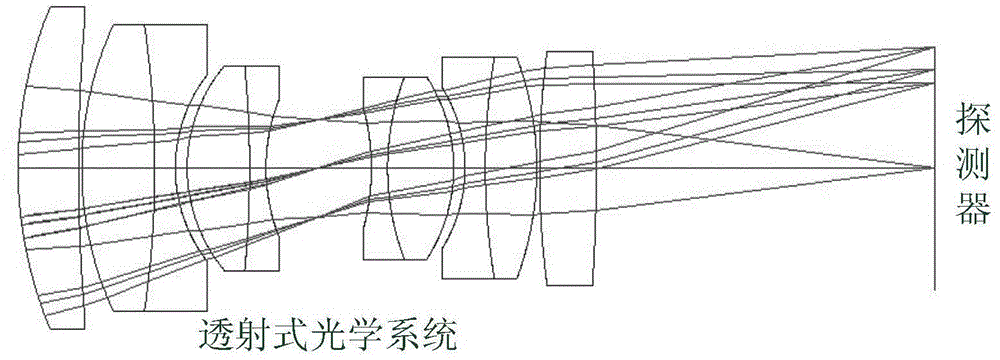Transmission-type digital imaging system design method
A technology of digital imaging system and design method, applied in optical components, optics, instruments, etc., can solve the problems of loss of digital imaging, long research and development cycle, and failure to fully exploit the advantages of digital imaging.
- Summary
- Abstract
- Description
- Claims
- Application Information
AI Technical Summary
Problems solved by technology
Method used
Image
Examples
Embodiment Construction
[0076] The technical key point of the present invention is: by analyzing the degree of difficulty of using digital processing to compensate for chromatic aberration, defocus, distortion, astigmatism, coma, curvature of field, and spherical aberration, the degree of difficulty of imaging definition loss caused by digital processing can be eliminated. The aberrations that can be easily compensated by digital processing are corrected by the optical design, and the aberrations that are easy to be compensated by digital processing are corrected by image processing algorithms, so that the quality of the transmission optical lens is no longer the determining factor of the imaging quality, and the digital processing algorithm is used to share the burden of the optical system. Partial pressure relaxes the constraints on the optical system, thereby reducing the number of transmissive mirrors.
[0077] (1) Establish a priori model of the imaging target
[0078] The prior model of the ima...
PUM
 Login to View More
Login to View More Abstract
Description
Claims
Application Information
 Login to View More
Login to View More - R&D
- Intellectual Property
- Life Sciences
- Materials
- Tech Scout
- Unparalleled Data Quality
- Higher Quality Content
- 60% Fewer Hallucinations
Browse by: Latest US Patents, China's latest patents, Technical Efficacy Thesaurus, Application Domain, Technology Topic, Popular Technical Reports.
© 2025 PatSnap. All rights reserved.Legal|Privacy policy|Modern Slavery Act Transparency Statement|Sitemap|About US| Contact US: help@patsnap.com



